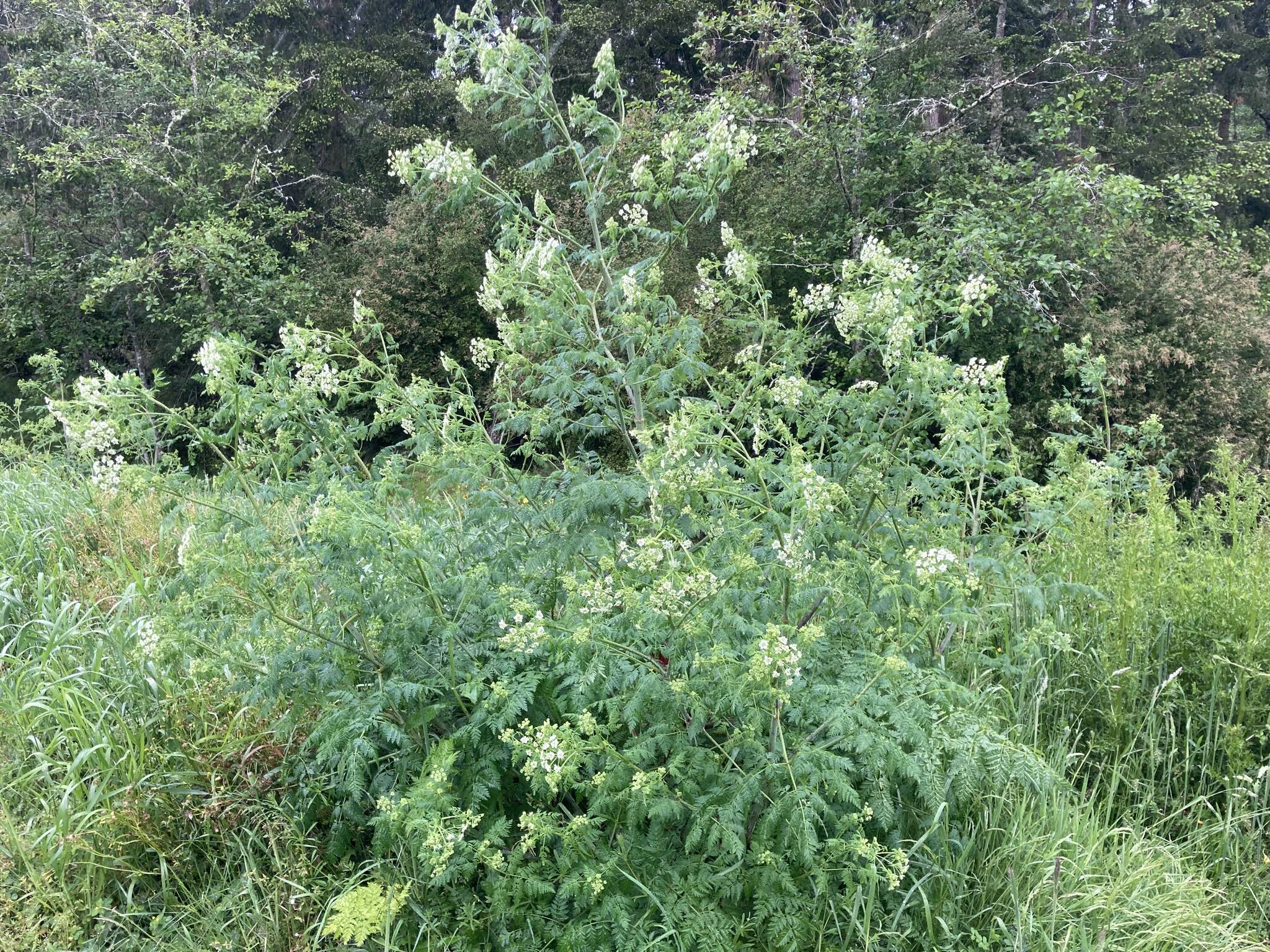A deadly weed that contributed to the downfall of at least one ancient Greek philosopher is well represented on Whidbey Island.
Every spring, poison hemlock sprouts in a variety of places around the island. Some mature plants can grow to a height of 12 feet. If left untreated, hemlock goes on to release seeds in the summer, creating new germinants for the next spring.
It’s a cycle that the Island County Noxious Weed Control Board is all too familiar with. Noxious Weed Coordinator Seth Luginbill said the county spends the most effort treating infestations of poison hemlock compared to any other noxious weed on Whidbey.
Luginbill will be leading a workshop about the plant that killed Socrates at 10 a.m. on April 14 at Greenbank Farm. The hands-on lesson is presented by Sound Water Stewards of Island County and is followed by a work party that will put participants’ newfound knowledge to the test in clearing a field of hemlock.
“A lot of people can get overwhelmed by the amount of weeds and the amount of work,” Luginbill said. “Sometimes just attacking it as a group helps remind us all that big things can happen with collective efforts.”
Poison hemlock is just one of several noxious weed species present on Whidbey. In 2022, a total of 112 tons of noxious weeds were received by the solid waste facility in Island County. Luginbill said any land owner can safely dispose of noxious weeds free of charge at the dump.
“Weeds don’t respect boundaries,” Luginbill said. “With a distribution so wide, it really is a community effort.”
Grounds crews focus on eradicating the harmful weeds that are located in county right-of-way and on properties owned by the county. Though staff aren’t able to extend this work to private properties currently, they can offer site visits and assist land owners in putting together a management plan.
“Even though Whidbey Island is small, there’s a spectrum of environmental factors that can play into which tools to use for methods of control,” Luginbill said.
Methods for eradicating poison hemlock, for example, vary. With small infestations, the plant can be pulled by hand or dug up with a shovel or pitchfork. For larger populations, a herbicide must be applied within the first or second season of its growth.
A single hemlock plant can produce up to 40,000 seeds. Hemlock seed buried in the soil can stay viable for a period of five to seven years, meaning it usually takes more than one season to fully contain an infestation. The plant is highly adaptive, and Luginbill has seen it blooming as late in the year as December.
Though Luginbill hasn’t heard of any human fatalities from hemlock in the county, some unfortunate goats did consume a patch of it that was mixed in with other forage materials along a fence line a couple of years ago.
“It certainly doesn’t take much to cause severe health issues for animals and people,” he said.
Anyone out there attempting to control the weed, he added, should make sure to wear gloves, long sleeves and pants in order to protect themselves from accidental exposure. Some people like to wear masks to avoid ingestion.
This summer, Luginbill will be leading workshops and work parties about two other noxious weeds, tansy ragwort on June 23 and thistles on Aug. 11. To register, visit soundwaterstewards.org.
“We want to encourage people to get out there and know their weeds and help us in addressing these concerns,” Luginbill said.
Additional resources about noxious weeds can be found on the Island County website, islandcountywa.gov/Health/DNR/Noxious-Weed/Pages/Home.aspx.



